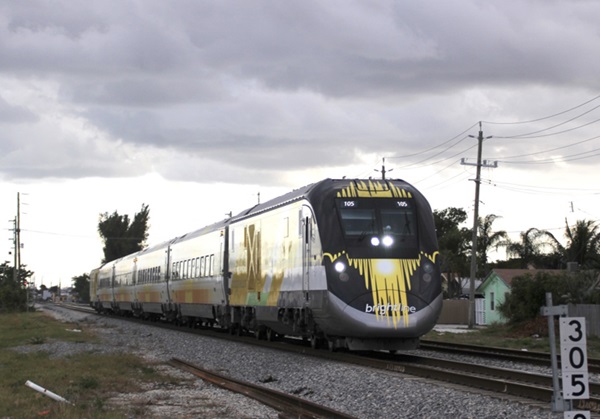One by one, most of Metra’s board of directors took aim Wednesday at Amtrak, accusing the agency that owns Union Station of being unconcerned about Metra and its customers. Some suggested that Amtrak was not sincere when it apologized for the Feb. 28 snafu that caused chaos for more than 65,000 Metra riders.
“Deep in my heart, I don’t think Amtrak cares,” director John Plante said. “That’s the biggest problem we have. They are just collecting our money. That’s where they are at; it’s always where they have been at. Until we get better control of the situation, I don’t expect Amtrak to improve at all.”
Director Steve Palmer was more blunt: The apology offered by Amtrak “was a bunch of crap.”
“I am not satisfied, I am not happy,” Palmer said. “I want to know what we’re going to get out of this (from Amtrak) besides, ‘It won’t happen again.’”
The critiques were prompted by a report on Metra’s dismal February on-time performance by Metra’s chief operating officer, Bruce Marcheschi, who recounted the explanation Amtrak gave for the station shutdown, which began during the morning rush hour and affected operations the entire day.
According to Marcheschi, an Amtrak employee was doing some wiring for positive train control in an equipment room at the station when he slipped off a ladder step and allowed a live wire to touch an equipment rack. That shorted out the server that controls the station’s signal system.
That description has been the most detailed explanation yet of what went wrong that day. After the incident, Amtrak CEO Richard Anderson apologized for the incident and blamed the signal failure on “human error in the process of deploying a server upgrade in our technology facility that supports our dispatch control system.”
A followup statement from Scot Naparstek, Amtrak executive vice president and chief operating officer, acknowledged that the “human error” occurred during a PTC-related hardware installation.
“It was not possible to activate a back-up control system since the network component damage prevented communications to both the primary and back-up systems,” Naparstek said.
Marcheschi, as have others, faulted Amtrak for attempting to perform that kind of work during rush hour. “Honestly, this was a bad decision to do something like that at that time of the day, even if the man hadn’t fallen off the ladder,” he told Metra’s board.
Marcheschi and board members repeated a common refrain: that Metra, as a tenant at Union Station, takes the blame for problems beyond its control.
“It’s Amtrak that’s in control of the system, but its our brand name that’s out there,” Marcheschi said.
Director Rodney Craig agreed: “Metra doesn’t have that control (over Union Station). We’re relying on somebody with a hope and a prayer that nothing happens,” he said.
Craig admitted that “kicking” Amtrak might not be the “politically astute thing to do.”
Director Don De Graf suggested that Metra’s lease agreement with Amtrak needed to change. “They can own it, but we need to run it.”
The signal problem at Union Station began around 8:30 a.m. and affected six of Metra’s lines, the BNSF, Metra’s busiest; Milwaukee West and Milwaukee North; the Heritage Corridor; North Central and SouthWest Service.
Marcheschi pointed out that Metra was not aware that Amtrak had rented out its Great Hall for an international professional squash tournament. When trains are delayed, the Great Hall is used as a holding area for huge crowds of commuters. Metra was concerned about safety as a result, Marcheschi said.















FAKE NEWS: When AMTK took over passenger service from the railroads back in 1971, they boasted they would be in the black in five years.
My compliments on the earlier post by a Mr. Johannsen. His insight does provide a way forward after the failings of Amtrak management. That is, in short, having the operations run by local interests. In spite of the woes inflicted by Amtrak, It would be unrealistic to identify a way for Metra to take over the Chicago Union Station real estate at this point. Consistent with Amtrak pattern of exiting the intercity passenger markets there may be a time when they are they only host local operators – then there would be no reason for Amtrak to control a Union Station.
Mary, your hunch is correct. Metra shuts down at night. Metra trains thin out after about 7:00 PM and there aren’t any after about 11:00 PM.
I don’t believe any Amtrak trains are scheduled into CUS at night but of course Amtrak trains don’t run on schedule. Possibly off the top of my head the last scheduled Amtrak train might be the Wolverine from Pontiac but even there the time zone change gets it into Chicago an hour earlier than if Chicago were in Eastern Time, if it runs on schedule.
They need to work something out as that was a very bad incident. Do that kind of work at night when there are very few commuters, I don’t know if Metra runs all night or not,. Our light rail commuter system does not. Poor planning.
One must keep in mind that CUS’s primary owners, the Burlington and Milwaukee, were glad to dump the property on Amtrak for peanuts in today’s dollars.
Outright purchase of Union Station is well outside of Metra’s financial ability. The real value of the property is in the the Great Hall building, and the air rights and the revenue potential from that. What is not needed is for Metra to then have to turn and become a manage of real estate to recoup the investment.
On the other hand, there is potential in agreements where Metra takes over maintenance of CUS-related track and signal infrastructure, dispatching, and maybe the area under the former concourse structure for future redevelopment/investment in a more pleasing entrance. Amtrak could keep the coach yard, the Great Hall and the air rights revenue. That would place Metra in the driver seat of the assets they consider most essential to providing service.
Next week I will arrive at CUS by Amtrak and depart on Metra. This is a frequent travel pattern of mine. This is called connectivity. It’s important in the world of train travel. Yet 48 years into Amtrak, there is no protocol for though ticketing. Visitors from countries with actual rail systems must look upon us Americans as if cave dwellers.
If Amtrak can’t get along with its connections what good is it?
Ultimately, the problem is that Metra doesn’t trust Amtrak. Trust is earned. It can be lost by bad behavior.
However, trust can be regained. To regain trust, you start with small things. Once you’ve established trust in small things, you move on to medium things. Once you’ve established trust in medium things, you can be make an effort to be trustful in larger things.
You also need to engage the communities and the stakeholders. Good community relations and good public relations help. Providing a show for the enthusiasts helps. Restoring full food service on the Lake Shore Limited and Capitol Limited would help.
I think it’s possible to restore Metra’s trust in Amtrak, but it’s going to be a long slog.
So why doesn’t Metra buy Union Station? Metra has the most traffic at Union. I’m sure Amtrak can use the money.
AMTRAK does indeed own that approach to Chicago Union Station.
At about 8:00 AM today, the drawbridge south of Union Station at 21st street had a “mechanical issue” that caused close to an hour delay on Metra Southwest Service and Heritage corridor lines. No doubt Amtrak trains that approach CUS from the south (former Pennsy, CWI) were also effected. Not sure if the bridge is owned by Amtrak or Metra. If Amtrak is the owner, as long as the Anderson management team runs the show, the Metra managers and Metra riders shouldn’t expect a whole lot of bang for their buck from Amtrak. Amtrak is simply a honey badger in that sense.
Very reminiscent of pre-Amtrak when some of the railroads wanted OUT of the passenger business and made a concerted effort to make riding their trains a miserable experience just so no one would ride them and they could petition the ICC to discontinue the train. The similarities under Anderson are shocking, though not surprising.